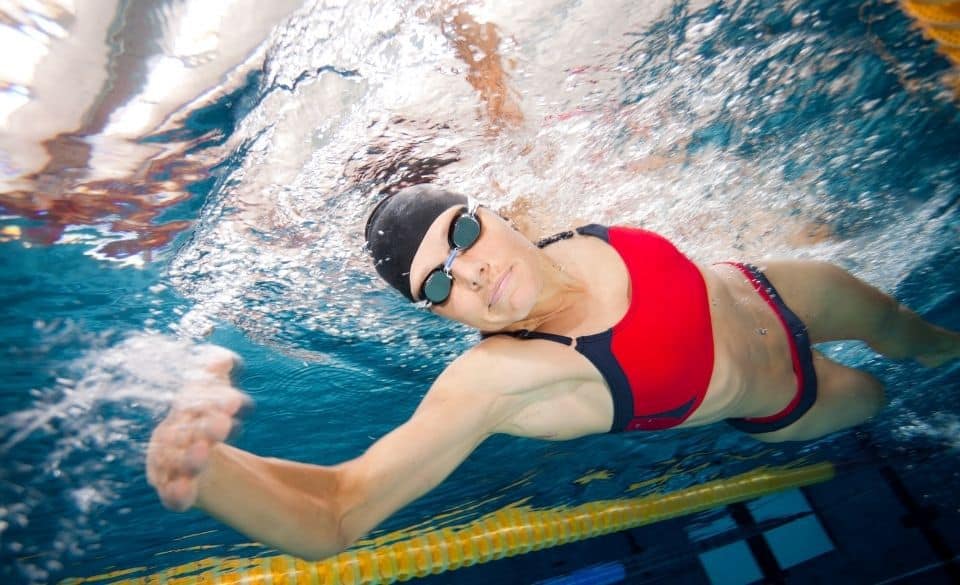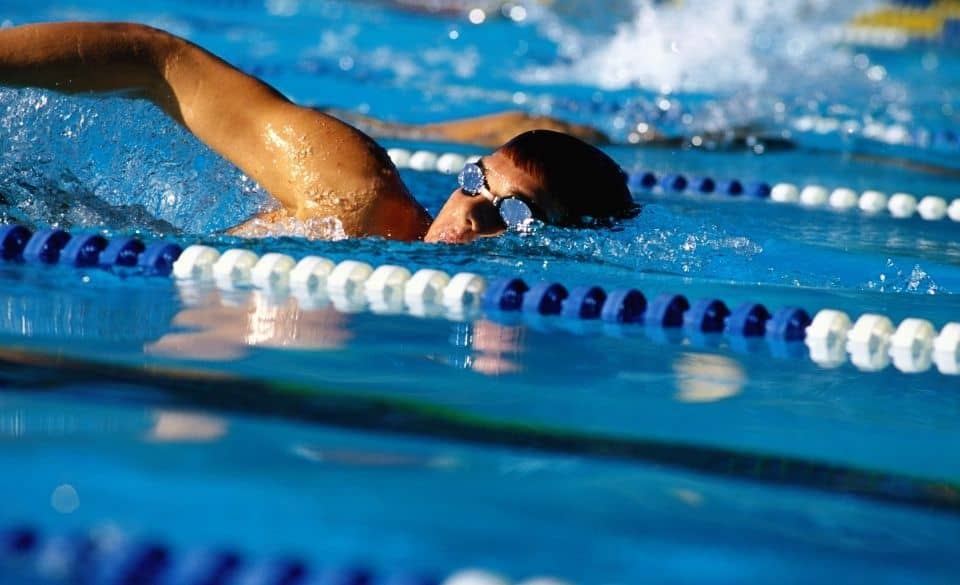
Corkscrew Swimming – UPDATED 2021 – A Complete Guide
Page Contents
Have you ever heard of corkscrew swimming? It is a combination of two different strokes and rotation of the body that can help you navigate around a buoy quickly or help improve your balance and coordination.
To learn more about this motion of swimming and how it can benefit you in terms of swimming drills and open water swimming, continue reading as we dive into how this can benefit the swimmer.
Corkscrew Swimming – A Complete Guide
Corkscrew swimming is a combination of two strokes, freestyle, and backstroke. Similar to the motion of a corkscrew, the swimmer takes three strokes freestyle, then three strokes on the back. This motion of swimming requires the swimmer to rotate from their front to their back every three strokes.
So what is corkscrew swimming used for? Well, first of all, this method of swimming teaches the swimmer to learn proper rotation and develop a strong kick. So it’s not uncommon for swimmers to use this type of swimming as a drill in their training.
This form of swimming is also used by triathletes in the triathlon swim when circumnavigating around a buoy. This allows them to check on the pack is and if there are any split in the field. Ultimately the purpose of the rotation is to increase your speed around the buoy both in triathlon swims and open water competitions. Alternatively, it can also help give open water swimmers a way to navigate or to take a rest when swimming in the sea.
Corkscrew Motion – Getting Started
To learn the corkscrew motion of swimming requires good rotation of the body and a powerful kick. Learning this way of swimming can help improve balance and coordination for freestyle and backstroke.
To get going start this exercise on your front (or back if you want). Take three strokes in the front crawl motion before rolling onto your back. Once you are on your back, take three backstroke strokes before rotating to the front crawl position again.
During the corkscrew rotation, it is important to continue to kick in a flutter kick-like motion. The flutter kick will help with balance as you rotate and help you to continue to glide through the water. It can also help your arms propel through the water when doing each of the three strokes.

Corkscrew Swimming Drill
To learn the corkscrew motion of swimming, you can learn a simple drill.
Start by locating yourself at the end of the pool. Next push off the wall in a streamlined position with your arms stretched out in front of you.
Next, rotate onto your side to breathe while still kicking. Then rotate to the left and take a breath, then rotate to the right and take another breath.
For the remainder of the length continue with the front crawl stroke.
Corkscrew Turn Swimming
Often known as the open water turn, the corkscrew turn is mostly used during open water or triathlon events.
However, most triathletes and swimmers don’t think so much about improving their open water turns. Open water turns is a simple phrase for swimming around a buoy, and if you have ever competed in an Ironman or open water swim, you will be well aware of navigating around buoys.
Learning the corkscrew turn when swimming can greatly improve speed, accuracy, and navigation when swimming around a buoy, which can ultimately help you gain an advantage over less knowledgeable swimmers. But it is important to know that the corkscrew turn is much more difficult to learn than the similar arc turn.
The full-motion requires the swimmer to roll onto their back while also changing direction around the turn buoy.
To execute this perfectly, rotate onto your back as your shoulder passes the buoy, making sure your rotate in the direction of the buoy.
When completing the corkscrew stroke you will need to lay the recovering backstroke arm behind the buoy to change direction to 90 degrees.
When executed perfectly, the turn will look smooth and provide a much faster turn around a buoy. But knowing when to use this turn is vital and will take practice.



